- EGG masses -
&
Jefferson Salamanders LARVAE.
or the Jefferson complex hybrids
(or whatever they are calling them these days),
in any given picture.
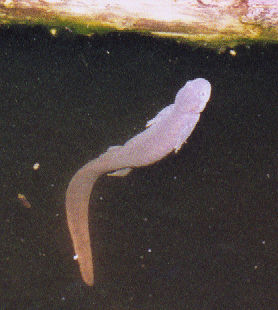
Comments: The graceful salamander. When a salamander comes up for a breath or gulp of air, breeching, as a whale does. It quickly takes a breath and dives in the blink of an eye. It is a real treat to see them swim, they are so good at it, you wonder why they don't spend more time in the water. In fact they do.
Details: Again the joy of night time photography a great deal of patience and a willingness to take lots of pictures. Yes, Jefferson salamanders can stay down for some time and likely take in some oxygen through their skin. From what I have seen many of the Jefferson complex would stay months after the eggs had been laid, in a pond.
Were they waiting for a mate?
Were they guarding the eggs?
Were they there to eat the growing insect population in the vernal pond?
Were they eating the eggs and larval in general or just those that were not their own off spring?
Date:
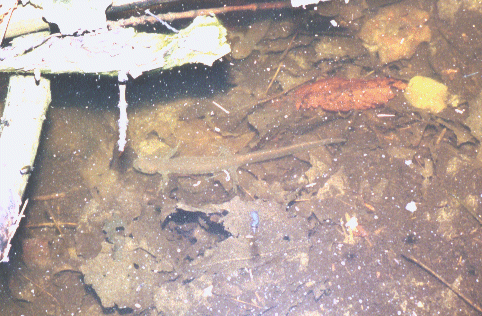
Comments:
Spot the salamander. Well it is easy
in this blow up but in the wild their colouring makes them very hard to
see. During the day the glare of the sun on the surface of the water
makes it very hard to see them and they can see you a good 20 feet away
and dive out of sight. The larva's golden eyes can see quite good
for a creature known as a "mole" salamander.
Details:
This is still a larval but one that is just
about ready to leave the pond.
Date:
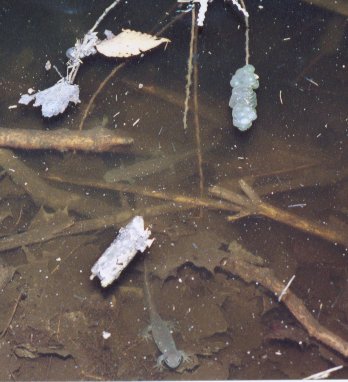
Comments:
A
newly laid egg mass on the end of a twig. It is still clear as it
has not taken Algae into its jelly. Not only will the Algae's
green colour help hide or camouflage it from predators but a symbiotic
relationship is set up. Where the Algae takes in waste from the developing
eggs and gives off oxygen, which is much needed in these often stagnant
pools.
Couple
of adult salamanders at the bottom of the pool. Whether walking on
the bottom or swimming they are quite at home in vernal ponds.
Details:
Night
time flash photography.
Date:
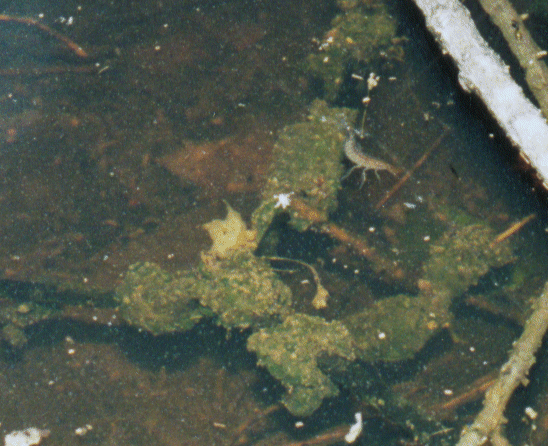
Comments:
An
older and more classic looking groups of egg-masses. The Algae is
very dark.
Details:
Night
time flash photography.
Date:

Comments:
Thin branches in a breeding pond are a must
and preferred for egg laying. Here is rare shot of some eggs being
laid.
Details:
Night
time flash photography.
Date:
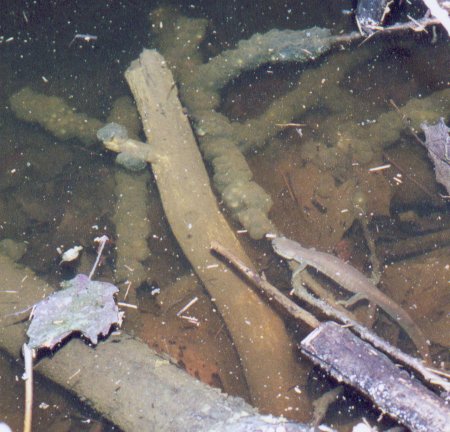
Comments:
The egg-masses at the end of the branch can
be seen as clear, lacking Algae. Some eggs are noticeably white,
some say they are dead or others that they have a white pigment, time will
tell and if you got proof sent it along.
Details:
Night
time flash photography.
Date:
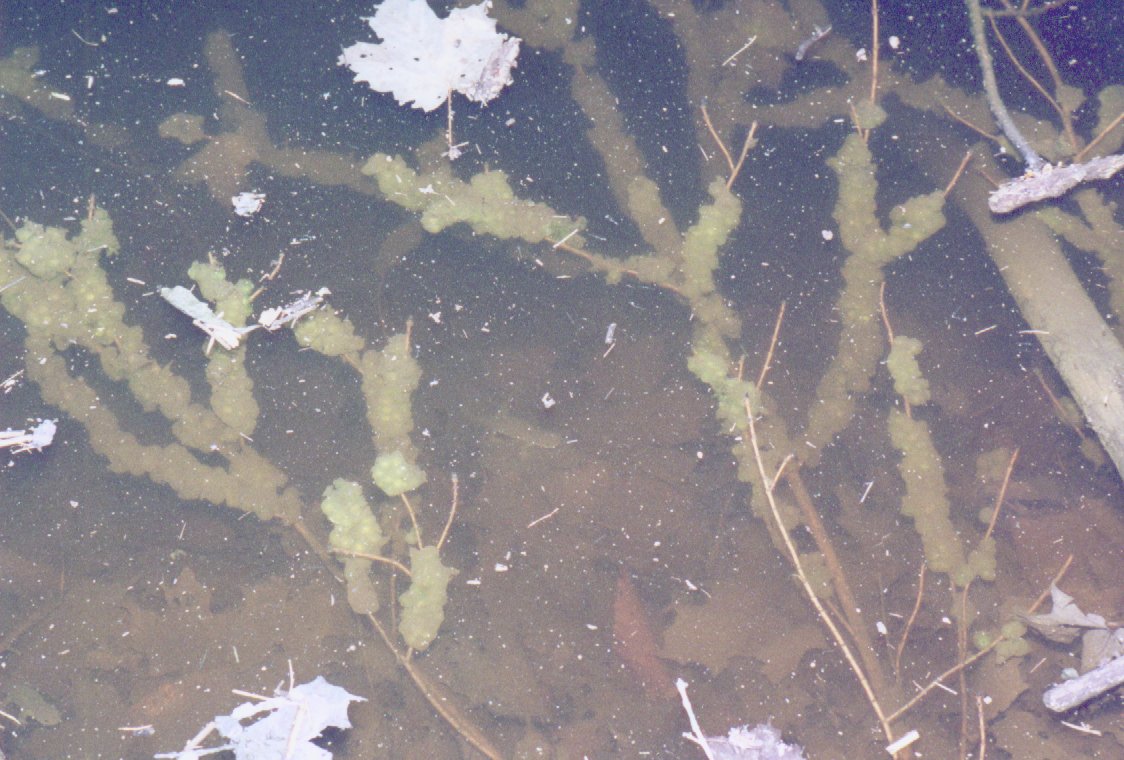
Comments:
Another
good shot of how thin branches are used first and the kinds of groups they
are laid in.
Details:
Night
time flash photography.
Date:
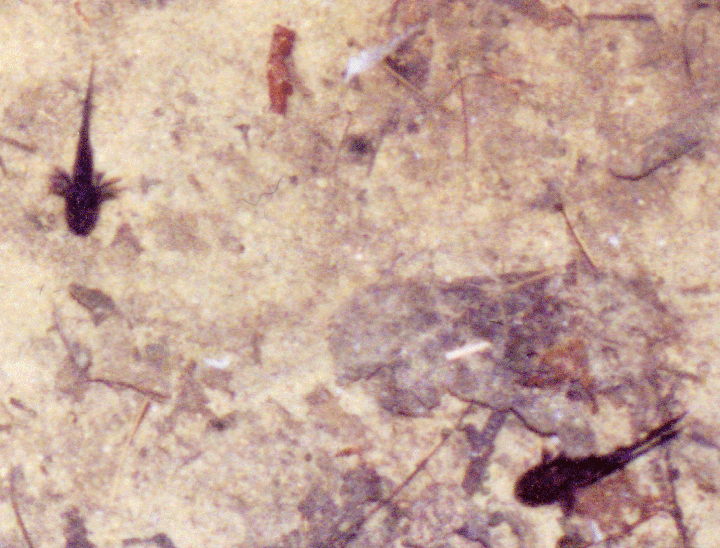
Comments:
These are my easiest pictures of salamander larvae. Their gills are
as big as body to start it appears and they look like little fuzzy black
blobs swimming around. The tail or body will fill in later.
Their shape is very similar to tadpoles but enough to make a person take
a second look. Also
look here for better close ups.
Details:
Night
time flash photography.
Date:
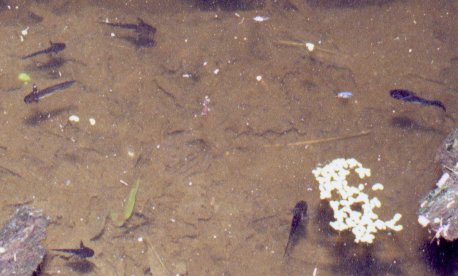
Comments:
A few days latter and the tails or their
bodies are getting thicker.
Details:
Night
time flash photography.
Date:
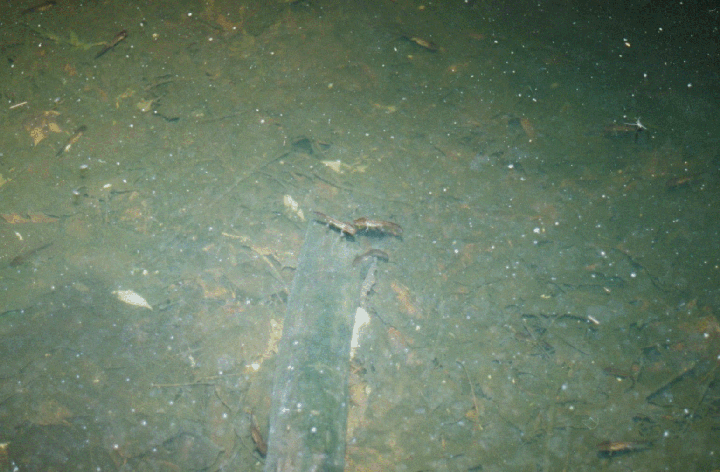
Comments:
CLICK
ON THIS PICTURE TO SEE THE LARGER ONE AND TRY COUNTING HOW MANY SALAMANDER
LARVAE THERE ARE!
By using night time
flash photography, a person can set up over a known area or even grid out
part of a pond and during the night when the salamander larvae are floating
on the surface, take a picture to get an idea of how many are in the pond.
An easy and unintrusive way to do a rough population count. Day or
night they like to float on or by the surface but at night they can not
see as well. During the day they can see you 20 or so feet away and
dive, leaving only rings of water. How odd that a salamander that
is call a mole salamander has such poor night vision - is anyone looking
into this (no pun intended)?
Details:
Night
time flash photography.
Date:
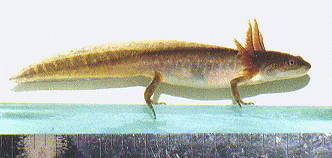
Comments:
Picture
in home studio with a jig set up against the inside of an aquarium.
The metal below is a ruler on the outside, metal rules shine too much.
My, what feathery gills it has. All the better to breath in low oxygen
stagnant pools.
Details:
Date:
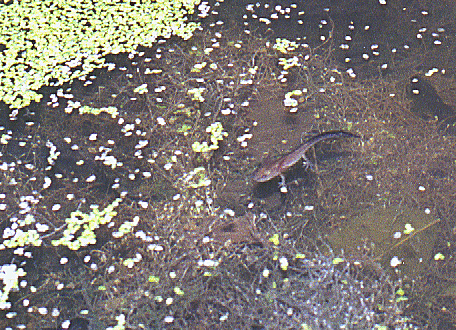
Comments:
In recent years our vernal pond has become over grown with plants, Duck
Weed on the surface and some kind of Stonewart filling in the spaces from
below, leaving little room for salamander larvae to swim around in.
When the water level starts to drop, things get even worse. If you
have seen this before and know if it has a negative affects or how to get
rid of these plants please let us know.
Details:
Night
time flash photography.
Date:
PLEEASSE SIGN OUR PETITION
It will make a difference!
Home Page - Main Table of Contents - Back up a page - Back to Top